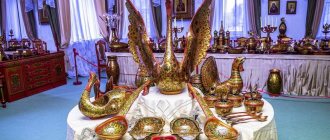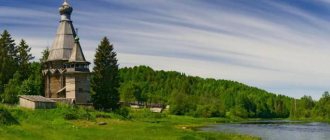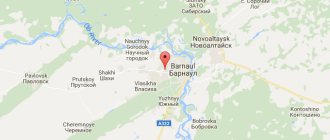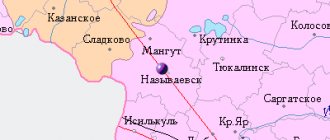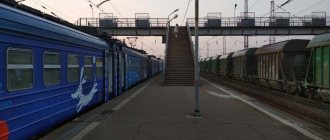The events are accompanied by promotions related to the ancient history of the locality. The celebration opens on the main street with the participation of the city administration. An exhibition of agricultural enterprises is being organized to introduce visitors to their own products. Games and competitions are organized for children.
The Feodorovsky Monastery hosts a bell ringing festival. Cultural institutions invite you to an exhibition of exhibits dedicated to the memorable date. Creative teams demonstrate performances. Craftsmen show crafts and share their experiences at master classes. Theaters are preparing productions. In the evening, popular performers take to the stage.
Gorodets City Day is celebrated on the second Saturday of September. The date is officially fixed in the charter of the locality. In 2021, the celebration takes place on September 11th.
City information
Gorodets is located in the Nizhny Novgorod region - in the west of the Russian Federation. Located on the left bank of the Volga River. The economy is represented by shipbuilding, woodworking, arts and crafts, and agricultural production.
A large railway station "Zavolzhye" lies near the city. The airport is operational. There are secondary specialized and general educational institutions and sports sections. There are cultural institutions and attractions. The object with which the settlement is associated is a printed gingerbread.
Population[ | ]
| Population | |||||||||
| 1897[16] | 1926 | 1931[16] | 1939 | 1959[17] | 1967[16] | 1970[18] | 1979[19] | 1989[20] | 1992[16] |
| 6300 | ↗11 200 | ↗12 200 | ↗16 100 | ↗27 019 | ↗31 000 | ↗34 229 | ↗35 727 | ↘34 210 | ↗34 400 |
| 1996[16] | 1998[16] | 2000[16] | 2001[16] | 2002[21] | 2003[16] | 2005 | 2006[16] | 2007 | 2008[22] |
| ↘33 800 | →33 800 | ↘33 700 | ↘33 600 | ↘32 442 | ↘32 400 | ↘31 900 | ↘31 700 | ↘31 500 | ↘31 379 |
| 2009[22] | 2010[21] | 2011[22] | 2012[23] | 2013[24] | 2014[25] | 2015[26] | 2016[27] | 2017[28] | 2018[29] |
| ↘31 357 | ↘30 658 | ↘30 623 | ↘30 447 | ↗30 570 | ↘30 524 | ↗30 563 | ↘30 530 | ↘30 493 | ↘30 188 |
| 2019[30] | 2020[3] | ||||||||
| ↘29 854 | ↘29 712 | ||||||||
As of January 1, 2021, in terms of population, the city was in 511th place out of 1,116[31]cities of the Russian Federation[32].
History of Gorodets
The history of Gorodets is usually counted from the second half of the 12th century. At this time, a fortress was erected to protect Vladimir Rus' from attacks by the Volga Bulgars. There is an official version that says that the founder is Yuri Dolgoruky. He founded the fortification in 1152.
Gorodets was destroyed in 1238 by Batu's troops. Soon it was renewed and became the capital of the principality of the same name. Was the object of internecine conflicts. In the 17th century, it acquired the status of a volost village in Yuryevets district, then in Balakhninsky district. Soon shipbuilding, production of baked goods, printed gingerbread, and woodworking appeared here.
At the beginning of the twentieth century, production and trade began to develop rapidly. In 1922 the city became a district town. At the end of the Second World War, a new area emerged. After the collapse of the USSR, the pace of economic development slowed down.
Economy and culture[ | ]
Gorodets painting.
Industry[ | ]
Traditional branches of local industry are shipbuilding (shipyard, ship repair plant), woodworking, arts and crafts (Gorodets painting and embroidery factories, an enterprise for baking printed gingerbread), as well as processing of agricultural products (milk, RaiPo, Bakery IP Kruglov V.A. and etc.). The first cruise ship in the history of modern Russia, the Sura, was built in the city[33]. In recent years, the production of automotive components (electrical wiring) has developed. One of the oldest enterprises of the All-Russian Society of the Blind (Avtokomplekt LLC) produces cleaning brushes that are sold throughout Russia and even in some CIS countries.
Education[ | ]
Kindergartens No. 4, 9, 10, 11, 13, 14, 15, 16, 18, 19, 21, 24, 29, 46, 49.
Schools No. 1, 2, 4, 5, 7, 12, 13, Evening comprehensive school No. 1, Gorodets specialized (correctional) boarding school of the 5th type, Gorodets specialized (correctional) boarding school of the 8th type
GAPOU "Gorodetsky Provincial College"
Children's music school, Children's art school
Museums[ | ]
The city of craftsmen
Gorodets is known not only as the oldest city in the Nizhny Novgorod region, a center of folk crafts (wood carving, painting), but also as a museum city. It is the only city in the region that has a Museum Quarter in its historical part. The central place in it is occupied by the local history museum - one of the first regional museums in the Nizhny Novgorod region (along with Vetluzhsky), founded in 1918. Since 1920, it has occupied the mansion of merchant I.P. Oblaev Jr. on the street. Lenina, 11 (formerly Kupecheskaya). The museum's collection includes about 16 thousand items of storage of the main fund. His collection of archaeological antiquities from the 12th to 14th centuries, including a princely helmet from the 13th to 14th centuries decorated with silver and gold, as well as a hanging lead seal of Prince Alexander Nevsky, is of national importance. In April 1991, the All-Russian conference “Gorodets Readings” was held for the first time at the museum, which later became a traditional regional scientific forum with the participation of leading archaeologists, historians, archivists, and specialists in the protection of ancient monuments, and since 2021 the museum is a co-organizer and venue for the traditional seminar “Archaeology of the Nizhny Novgorod Volga region and adjacent territories”[34][35]. On the basis of the local history museum, the Gorodets Historical and Art Museum Complex was created in 2007, which includes several more museums located next to it and on neighboring ones - Andrei Rublev Street, Revolution Embankment and Aleksandrovskaya Embankment:
- Children's Museum on Kupecheskaya
- Museum "Gorodets Gingerbread": opened on July 26, 2008 in the main house of the former mansion of merchant S. F. Tryapkin, which is a monument of architecture and urban planning of federal significance. The building is located at the very beginning of the museum quarter, at the intersection of Lenin and Kirov streets. The museum tells about the history of gingerbread making and modern gingerbread production. The Gorodets Gingerbread Museum is the second (after a similar museum in Tula) dedicated to the history of the sweet industry.
- Museum "House of Countess Panina"
- Museum "Russian Samovar Tower": opened on September 8, 2007 in the Grishaev estate, which is an architectural monument of the 19th century. The basis of the museum’s collection was the private collection of the head of the Zemsky Assembly of the Gorodetsky municipal district, Nikolai Fedorovich Polyakov. The collection includes more than 400 samovars and is considered [ by whom?
] the largest in Russia. In September 2021, N. F. Polyakov’s samovar collection was donated to the city[36]. - City of masters
- Museum "Gallery of Good"
In 2021, the private museum “Gorodets on the Volga” opened, the exhibition of which includes a collection of ancient coins, items of clothing and everyday life of officials of the pre-revolutionary era, and a collection of paintings by contemporary artists[37].
Gingerbread[ | ]
Forms of Gorodets printed gingerbreads
Gorodets has long been famous for printed gingerbreads. Contrary to the widespread opinion in local history literature about the local gingerbread business back in the 17th century, documentary evidence of gingerbread making in the village of Gorodets, Balakhninsky district, dates back to the end of the 18th century. Judging by the reviews of contemporaries, the gingerbread industry at that time was already quite large. The earliest known gingerbread boards of Gorodets craftsmen also date back to the last quarter of the 18th century (kept in the collection of the State Historical Museum). The development of the gingerbread business in Gorodets was facilitated by the large trade in bread at the local bazaar, as well as the proximity of the Nizhny Novgorod fair, from where gingerbreads were distributed throughout the Volga region and went to the Urals, Don, and Central Asia. The heyday of Gorodets’ “sweet trade” occurred at the end of the 19th century. At that time, more than 30 varieties of gingerbread were baked here (some weighed up to one and a half pounds), and 15 gingerbread establishments operated. Most of the gingerbread makers were Old Believers. The most famous dynasties of gingerbread masters are the Bakharevs, Belyaevs, Glazunovs, Lemekhovs, Shcherbakovs.
During the years of Soviet power, the gingerbread industry declined sharply. In 1930, the Red Gingerbread Artel was created, which was later transformed into the Gorodets Food Processing Plant. Preserving the traditions of the old masters, the food processing plant baked printed gingerbread “Sterlyadki” weighing 5 kg. The author of the printed board for it was a descendant of the famous dynasty of gingerbread masters - carver Georgy (Egor) Illarionovich Bakharev.
In the 1970s, a new stage in the development of gingerbread business began in Gorodets. This was the great merit of the director of the food processing plant, Nina Petrovna Shishkina. Under her leadership, an original recipe for a printed gingerbread called “Gorodets Souvenir” was created, and new printed boards were ordered from the talented wood carving master Valery Georgievich Zelenin.
Currently, the main producers of printed gingerbread are Anna Grigorievna Voronina’s enterprise “Gorodetsky Gingerbread” [38] (former team of the Gorodets food processing plant) and OJSC “Gorodetsky Confectioner” (also known under the brand “LuVeNa - Love, Faith, Hope”). Printed boards are cut by local craftsmen Valery Zelenin, Sergey Sokolov, Victor Galibin. The largest printed gingerbread in Gorodets is baked annually for the regional festival “Folk Craftsmen Brotherhood”. It weighs 20 kg and is made from a board by the famous Gorodets carver Andrei Kolov, intended for casting a cast-iron panel to decorate the museum quarter. The giant gingerbread consists of four parts, baked separately and held together with sugar icing.
Sports[ | ]
Football, cross-country skiing, combat sports (boxing, karate, kickboxing, sambo), and athletics are actively developing in the city.
The first sports team in Gorodets appeared in 1912 - it was a team of amateur football players. In winter, team members “stood” on skates, skating on the city skating rink (Ceremonov Swamp) or on the Volga. On February 2, 1914, the town residents undertook a unique speed skating marathon from Gorodets to Nizhny Novgorod and back. The athletes covered a distance of almost 60 km on the ice of the river twice in a day (both times spending 3.5 hours on it).
During the years of Soviet power, sports societies were created in the city, including the most numerous and titled - Spartak. Famous athletes and athletes of the 1930s and 1940s were Viktor Andrianovich Krylov (director of the Spartak stadium), Irina Sergeevna Insarskaya (physical education teacher in city schools, Gorodets record holder in many sports, participant in the 1947 All-Russian Spartakiad in Moscow).
A native of the city, USSR champion in speed skating in the sprint all-around, Tatyana Denisova, now also works as a physical education teacher at school No. 2. A student (since 1974) of Vladimir Aleksandrovich Bayanov, she trained on the seasonally filled ice of the Spartak stadium. Currently a member of the Saiga running club.
The most titled athlete in Gorodets is skier Alexey Kuznetsov, bronze medalist at the Squaw Valley Olympics (California, 1960). He was a member of the ski team of the Timiryazev collective farm in the Gorodetsky district and always played for the Urozhay sports society. After finishing his career, the athletes worked as a coach. In memory of the outstanding athlete, a ski race is held annually in Gorodets.
A well-known student of the Gorodets boxing school is Andrei Gogolev, Honored Master of Sports, three-time champion of Russia (1996, 1997 and 1998), world champion in 2001 (his mentor is I.V. Golubkov, Honored Trainer of Russia).
Sports sections operate at the Gorodets stadium "Spartak", a sports and recreation center on the street. Krupinov, in city schools. The local football team plays in the Nizhny Novgorod region championship.
In January 1997, the Saiga running club was founded in the city. KLB members take part in track and field runs and cross-country skiing. Twice Gorodets marathon runners made multi-day runs from Moscow to Gorodets, dedicated to the 850th anniversary of these cities (in 1997 and 2002, respectively). Every year, members of the Saiga club participate in daily propaganda runs: on the eve of Defender of the Fatherland Day - the Smirkinsky Run in memory of internationalist soldiers (40 km along the Gorodets - Sokolskoye highway), and on May 8 and 9 - the Torch of Peace, a relay race in Kovernino , Semyonov, Linda and back to Gorodets.
Since 2002, the traditional athletics marathon “Maly Kitezh” has been held in the city in the summer. About a hundred runners from different cities of Russia (Nizhny Novgorod, Ivanovo, Kirov, Moscow, Izhevsk, Ryazan and others) will start there.
The oldest and, perhaps, the most popular sports competition in Gorodets is the annual track and field relay race for the prizes of the Gorodets Herald newspaper. It has been held since 1934, with stages of the relay passing through the central streets of the city.
Coat of arms
The coat of arms of Gorodets is presented in the form of a red French shield. It represents protection from enemies.
In the red field there is a golden boat, indicating the development of shipbuilding. The background represents the prosperity of the city. The floating craft is depicted on a blue wave, indicating a connection with the Volga River and the Gorky Hydroelectric Power Station. The comb is directed to the viewer's left and is edged with silver.
The author of heraldry is N. Lobanov. The artistic composition is included in the State Heraldic Register of the Russian Federation under No. 693. Approved by the decision of the Zemsky Assembly of the Gorodetsky District dated July 31, 2000 No. 57/49.
Religion[ | ]
Historically, Gorodets was the center of the Old Believers in the Russian Empire. Here representatives of Orthodoxy lived peacefully next to Old Believers of various accords (directions).
During the years of Soviet power, churches of all faiths in the city of Gorodets were closed, and some of them were completely destroyed. In the 1990s, the restoration of churches began. Nowadays in the city there are Orthodox churches of the Archangel Michael (1712), Spassky (1752), Intercession (1824)[39], the Old Believer (Old Orthodox) Church of the Assumption of the Virgin Mary, the Edinoverie Church of the Exaltation of the Cross is being restored[40]. In 2009, Patriarch Kirill of Moscow and All Rus' consecrated the restored Gorodetsky Monastery of Feodorovsky.
On the territory of the former Detinets there is a temple in the name of the Dormition of the Blessed Virgin Mary - a small brick church built after 1905 - a low, single-domed quadrangle with a hipped bell tower. Initially, this church belonged to the Old Believers, who accepted the Belokrinitsky hierarchy. Closed in the 1930s. In the 1990s, it was returned to the Old Believers of the Novozybkov hierarchy under the jurisdiction of Patriarch of Moscow and All Rus' Alexander (Kalinin), as the largest Old Believers community in the city, and repaired.
In 2012, Gorodets became the center of the Gorodets and Vetluzh diocese of the Russian Orthodox Church of the Moscow Patriarchate, which included parishes in the northern regions of the Nizhny Novgorod region. The head of the diocese is Bishop Augustine (Anisimov), former rector of the Feodorovsky Monastery.
In addition, representatives of other Christian denominations live in the city, including, since the mid-19th century, representatives of the Roman Catholic and Lutheran churches, who do not have their own religious buildings. Since the middle of the 20th century, a community of Evangelical Christian Baptists has been active in the city, and since the end of the 20th century - Jehovah's Witnesses.
Literature[ | ]
- Gorodets, village of Nizhny Novgorod province // Encyclopedic Dictionary of Brockhaus and Efron: in 86 volumes (82 volumes and 4 additional). - St. Petersburg, 1890-1907.
- Seleznev F.A. The question of the time of the founding of Gorodets in Russian pre-revolutionary historiography // Bulletin of the Nizhny Novgorod University. N.I. Lobachevsky. 2012. No. 1 (1). P.182 - 189.
- Seleznev F.A. Foundation of Gorodets on the Volga: results of the study // Bulletin of Nizhny Novgorod University named after. N. I. Lobachevsky. 2012. No. 4 (1). P.287 - 294.
- Seleznev F.A. Celebration of the 800th anniversary of Gorodets Volzhsky in 1952: historiographical background // Proceedings of the Faculty of History of St. Petersburg University. 2013. No. 12. P. 168-174.

